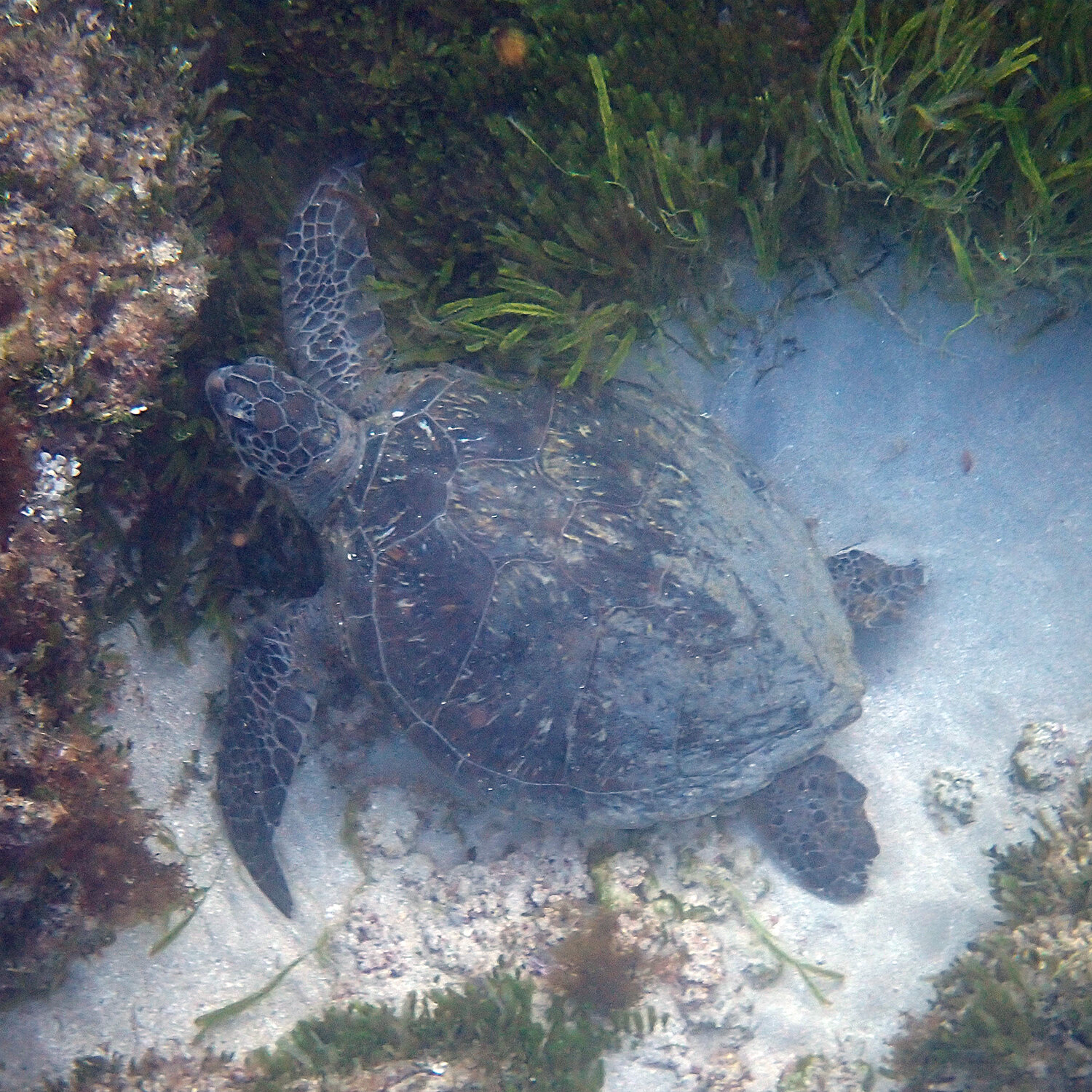We’ve had yet another week of south easterlies stirring up the bays making visibility poor for taking photographs. That doesn’t mean I haven’t enjoyed my swims, though. Emily Bay never fails to lift my spirits.
A really exciting observation for me this week was the spotfin squirrelfish, Neoniphon samara. I can count on one hand the number of times I’ve seen this guy (and I am pretty sure it is the same one) in the last couple of years. That is because they are nocturnal (a clue to this is their huge eyes). This fish is very shy and ducks under an Acropora coral shelf very fast when it sees me, so you have to point and shoot really quickly – with varying results! It lives under these coral shelves during the day and then emerges out to the seagrass beds and hard-bottomed habitats at night, when it feeds on shrimps, small crabs and fish. (Reference Fishbase and Bray, D.J. 2020, Neoniphon sammara in Fishes of Australia, both accessed 28 Sep 2021.)
Spotfin squirrelfish - Neoniphon samara
I also observed several snake eels out and about this week: two convict eels, Leiuranus versicolor, and one banded snake eel, Leiuranus semicinctus. I have put three up here for you to see (two top images and bottom left). The markings, even in the same species, are quite different and change as they age. You can see more of these snake eels, as well as the varieties of moray eels, over on the eels page of this website. They are quite docile and are usually found in the sandy reaches of the bay – they can bury themselves in the sand as quick as a flash. We also find a spotted snake eel, called the ocellate snake eel, Myrichthys maculosus, in our bays from time to time. So you can see the difference, I’ve included an image of this one taken a few months ago (bottom right)..
Here’s some quick snake eel facts for you:
They are a fish, and not a snake (an eel is a type of fish).
They breathe underwater using gills (snakes have lungs).
They can live up to 20 years.
They are nocturnal animals, which is why it is always exciting to see one during the daytime.
They bury themselves in the sand to hide from predators.
We have two resident green sea turtles, Chelonia mydas, that seem to snooze quite a bit. When I see them both they are normally at least 5 m or 6 m apart, if not a lot further. Today, they were catnapping very close to each other.
Finally, tonight is my debut as an actor! I’ve been rehearsing really hard over some weeks for my 10-second cameo, playing myself as the person who photographed the mullet with a gold ring around its head! Hilarious! Paul Garnsey, an island resident, used the story as inspo for a short play called Goldfish. Wish me luck!
Until next week …







